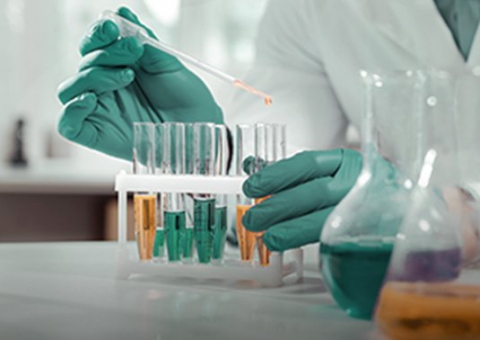Product/Market Information
22
2023
Sep
Food News Magazine311: Next-Generation Super Citrus Flavonoids
A Comprehensive New Approach to Lipid Management
Introduction
As the diet and economic lifestyle of the Taiwanese population shift towards a more Westernized model, the prevalence of hyperlipidemia continues to rise. Among those under 50 years of age, the prevalence of hyperlipidemia is even higher than that of hypertension and hyperglycemia, becoming an issue that cannot be ignored among middle-aged and young populations. Aside from the straightforward blood test reports, clinical observations show that patients with hyperlipidemia often experience symptoms such as dizziness, fatigue, insomnia, forgetfulness, numbness in limbs, chest tightness, and palpitations. These symptoms are often accompanied by overweight and obesity. By observing these symptoms, individuals can assess the possibility of having elevated blood lipids.
In addition to monitoring total cholesterol levels, it is crucial to pay attention to the ratio of high-density lipoprotein cholesterol (HDL-c) to low-density lipoprotein cholesterol (LDL-c) for preventing the onset of atherosclerosis. Excessive LDL-c is prone to accumulate in blood vessels, undergo oxidation by free radicals in the body, leading to oxidized LDL-c (oxLDL), inflammation, and ultimately atherosclerosis.
The World Health Organization (WHO) has previously stated that citrus fruits can effectively prevent cardiovascular diseases. These research findings all point to the presence of flavonoids in citrus fruits. Within this category of flavonoids lies a rare subgroup known as Hydroxyl PolyMethoxyFlavones, characterized by additional hydroxyl and methoxy groups in their molecular structure compared to general citrus flavonoids. This unique structural composition confers special physiological activity to these flavonoids, making them a promising emerging material for lipid management.
Inhibition of Pancreatic Lipase Activity
Approximately 20%-30% of the body's cholesterol comes from dietary intake. When fats and lipids from food enter the small intestine, they require emulsification by bile acids and breakdown by pancreatic lipase to convert large molecules of fat into small fatty acids that can be absorbed by the small intestine.
In vitro studies have shown (2) that these Hydroxyl PolyMethoxyFlavones can bind with pancreatic lipase, affecting the enzyme's ability to break down fats. This results in a reduction of over 70% in the activity of the lipase, significantly decreasing the breakdown and absorption of fats from the diet.
Regulating Blood Lipids and LDL Cholesterol
LDL-c is responsible for transporting cholesterol to the organs and tissues that need it in the body. Excess LDL-c is then recycled by LDL receptors on the liver. If there is an insufficient amount of HDL-c and LDL receptors in liver cells, excess LDL-c cannot be efficiently recycled and may lead to deposition.
In animal models induced with high-fat diets, groups supplemented with Hydroxyl PolyMethoxyFlavones showed significant reductions in total cholesterol and LDL-c levels after 8 weeks (Figure 1). Another in vitro study (3) revealed that Hydroxyl PolyMethoxyFlavones can increase the expression of LDL receptors on liver cells, promoting the recycling of LDL-c in the blood, and inhibit the formation of foam cells, thereby reducing the occurrence of arteriosclerosis.
Inhibiting Adipocyte Differentiation and Fat Accumulation
AMPK (5'AMP-Activated Protein Kinase) is an upstream regulatory protein in the endogenous lipid synthesis process. Activating AMPK inhibits the synthesis of fats and cholesterol, while promoting fat breakdown.
In experiments with adipocytes, Hydroxyl PolyMethoxyFlavones were shown to activate the AMPK pathway. This led to the inhibition of the gene SREBP1c, which is involved in fat generation. Consequently, it suppressed the synthesis enzyme for fatty acids, preventing adipocytes from differentiating and reducing the accumulation of oil droplets within the cells (4). Therefore, in animal experiments with mice induced to be obese by a high-fat diet, those supplemented with Hydroxyl PolyMethoxyFlavones exhibited significant reductions in body weight and abdominal fat accumulation compared to the control group (Figure 2).
Improving Acne, Blackheads, and Oily Skin
In most Asian regions, summer is characterized by a hot and humid climate. The continuously rising temperatures, combined with high humidity, often lead to excessive facial oil production and outbreaks of acne and blackheads. In recent years, due to the impact of the pandemic, wearing masks has become a daily necessity, exacerbating facial inflammation and discomfort.
Research has found that the condition of the skin on our faces and the severity of acne outbreaks are closely related to our internal lipid profile. Clinical studies conducted abroad have shown a significant positive correlation between the degree of skin inflammation, rosacea, and acne with lipid levels (5).
Results from small-scale human trials conducted by the manufacturer revealed that participants who consumed Hydroxyl PolyMethoxyFlavones experienced significant improvements in skin conditions. After 8 weeks of supplementation, evaluations conducted using the professional skin analysis tool VISIA showed a substantial reduction in skin inflammation and a 5% decrease in oiliness in the T-zone, along with a 12% increase in skin hydration, indicating a remarkable improvement in skin condition (Figure 3).
Citrus fruits are widely recognized as natural, safe, and possessing natural health benefits. Through modern patented processes, the precious and rare effective components found in citrus fruits are extracted. A series of experiments have confirmed their effectiveness in regulating blood lipids, body fat, and skin sebum, comprehensively improving lipid metabolism from the inside out. Currently, lipid-related health materials are outdated, with similar formulations in products on the market, making it challenging to differentiate them competitively. Moreover, there are concerns about the usage and safety of more effective materials. The emerging Hydroxyl PolyMethoxyFlavones undoubtedly inject new vitality into the lipid health market that the public is concerned about, becoming a new and more comprehensively applied material.
Author: Chunyi He
Introduction
In addition to monitoring total cholesterol levels, it is crucial to pay attention to the ratio of high-density lipoprotein cholesterol (HDL-c) to low-density lipoprotein cholesterol (LDL-c) for preventing the onset of atherosclerosis. Excessive LDL-c is prone to accumulate in blood vessels, undergo oxidation by free radicals in the body, leading to oxidized LDL-c (oxLDL), inflammation, and ultimately atherosclerosis.
The World Health Organization (WHO) has previously stated that citrus fruits can effectively prevent cardiovascular diseases. These research findings all point to the presence of flavonoids in citrus fruits. Within this category of flavonoids lies a rare subgroup known as Hydroxyl PolyMethoxyFlavones, characterized by additional hydroxyl and methoxy groups in their molecular structure compared to general citrus flavonoids. This unique structural composition confers special physiological activity to these flavonoids, making them a promising emerging material for lipid management.
The Health Benefits of Hydroxyl PolyMethoxyFlavones
Inhibition of Pancreatic Lipase Activity
Approximately 20%-30% of the body's cholesterol comes from dietary intake. When fats and lipids from food enter the small intestine, they require emulsification by bile acids and breakdown by pancreatic lipase to convert large molecules of fat into small fatty acids that can be absorbed by the small intestine.
In vitro studies have shown (2) that these Hydroxyl PolyMethoxyFlavones can bind with pancreatic lipase, affecting the enzyme's ability to break down fats. This results in a reduction of over 70% in the activity of the lipase, significantly decreasing the breakdown and absorption of fats from the diet.
Regulating Blood Lipids and LDL Cholesterol
LDL-c is responsible for transporting cholesterol to the organs and tissues that need it in the body. Excess LDL-c is then recycled by LDL receptors on the liver. If there is an insufficient amount of HDL-c and LDL receptors in liver cells, excess LDL-c cannot be efficiently recycled and may lead to deposition.
In animal models induced with high-fat diets, groups supplemented with Hydroxyl PolyMethoxyFlavones showed significant reductions in total cholesterol and LDL-c levels after 8 weeks (Figure 1). Another in vitro study (3) revealed that Hydroxyl PolyMethoxyFlavones can increase the expression of LDL receptors on liver cells, promoting the recycling of LDL-c in the blood, and inhibit the formation of foam cells, thereby reducing the occurrence of arteriosclerosis.
Inhibiting Adipocyte Differentiation and Fat Accumulation
AMPK (5'AMP-Activated Protein Kinase) is an upstream regulatory protein in the endogenous lipid synthesis process. Activating AMPK inhibits the synthesis of fats and cholesterol, while promoting fat breakdown.
In experiments with adipocytes, Hydroxyl PolyMethoxyFlavones were shown to activate the AMPK pathway. This led to the inhibition of the gene SREBP1c, which is involved in fat generation. Consequently, it suppressed the synthesis enzyme for fatty acids, preventing adipocytes from differentiating and reducing the accumulation of oil droplets within the cells (4). Therefore, in animal experiments with mice induced to be obese by a high-fat diet, those supplemented with Hydroxyl PolyMethoxyFlavones exhibited significant reductions in body weight and abdominal fat accumulation compared to the control group (Figure 2).
Improving Acne, Blackheads, and Oily Skin
In most Asian regions, summer is characterized by a hot and humid climate. The continuously rising temperatures, combined with high humidity, often lead to excessive facial oil production and outbreaks of acne and blackheads. In recent years, due to the impact of the pandemic, wearing masks has become a daily necessity, exacerbating facial inflammation and discomfort.
Research has found that the condition of the skin on our faces and the severity of acne outbreaks are closely related to our internal lipid profile. Clinical studies conducted abroad have shown a significant positive correlation between the degree of skin inflammation, rosacea, and acne with lipid levels (5).
Results from small-scale human trials conducted by the manufacturer revealed that participants who consumed Hydroxyl PolyMethoxyFlavones experienced significant improvements in skin conditions. After 8 weeks of supplementation, evaluations conducted using the professional skin analysis tool VISIA showed a substantial reduction in skin inflammation and a 5% decrease in oiliness in the T-zone, along with a 12% increase in skin hydration, indicating a remarkable improvement in skin condition (Figure 3).
Conclusion
Citrus fruits are widely recognized as natural, safe, and possessing natural health benefits. Through modern patented processes, the precious and rare effective components found in citrus fruits are extracted. A series of experiments have confirmed their effectiveness in regulating blood lipids, body fat, and skin sebum, comprehensively improving lipid metabolism from the inside out. Currently, lipid-related health materials are outdated, with similar formulations in products on the market, making it challenging to differentiate them competitively. Moreover, there are concerns about the usage and safety of more effective materials. The emerging Hydroxyl PolyMethoxyFlavones undoubtedly inject new vitality into the lipid health market that the public is concerned about, becoming a new and more comprehensively applied material.
Reference
國民營養健康狀況變遷調查成果報告2013-2016年。(2019)
Xin Huang, et al. International Journal of Biological Macromolecules (2020)164:1927-1938.
Jui-Hung Yen, et al. Mol. Nutr. Food Res (2011) 55:733–748.
Ching-Shu Lai, et al. J. Agric. Food Chem (2013) 61:10320-10328.
Ching-Shu Lai, et al. Carcinogenesis (2007) 28(12):2581-2588
Xin Huang, et al. International Journal of Biological Macromolecules (2020)164:1927-1938.
Jui-Hung Yen, et al. Mol. Nutr. Food Res (2011) 55:733–748.
Ching-Shu Lai, et al. J. Agric. Food Chem (2013) 61:10320-10328.
Ching-Shu Lai, et al. Carcinogenesis (2007) 28(12):2581-2588








